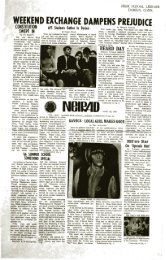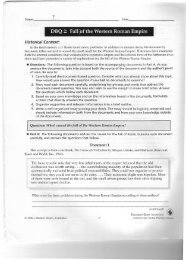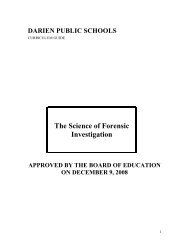Forensic Science Unit 2: Crime Scene How is a crime scene ...
Forensic Science Unit 2: Crime Scene How is a crime scene ...
Forensic Science Unit 2: Crime Scene How is a crime scene ...
Create successful ePaper yourself
Turn your PDF publications into a flip-book with our unique Google optimized e-Paper software.
<strong>Forensic</strong> <strong>Science</strong> <strong>Unit</strong> 2: <strong>Crime</strong> <strong>Scene</strong><br />
<strong>How</strong> <strong>is</strong> a <strong>crime</strong> <strong>scene</strong> identified and processed?<br />
What types of evidence might be found at a <strong>crime</strong> <strong>scene</strong>, and how <strong>is</strong><br />
each recognized, collected, packaged, and processed?<br />
Learning Objectives<br />
Identify a <strong>crime</strong> <strong>scene</strong><br />
L<strong>is</strong>t the types of evidence that might be found at a <strong>crime</strong> <strong>scene</strong><br />
Sequence the steps in securing and processing a <strong>crime</strong> <strong>scene</strong><br />
Summarize Locard’s exchange principle and its application to a <strong>crime</strong> <strong>scene</strong><br />
Explain the responsibilities of <strong>crime</strong> <strong>scene</strong> professionals and how they work<br />
together<br />
Define chain of custody and explain its importance<br />
Demonstrate proper technique for collecting, packaging, and storing different<br />
types of evidence found at a mock <strong>crime</strong> <strong>scene</strong><br />
Photograph, and sketch a mock <strong>crime</strong> <strong>scene</strong><br />
D<strong>is</strong>tingu<strong>is</strong>h between direct and circumstantial evidence<br />
Compare and contrast different ways to search a <strong>crime</strong> <strong>scene</strong><br />
Differentiate between class and individual evidence<br />
Explain primary and secondary <strong>crime</strong> <strong>scene</strong><br />
Contrast real-life evidence examiners with TV examiners (CSI)<br />
Describe how a detective will try to reconstruct a <strong>crime</strong> <strong>scene</strong> using documented<br />
evidence and eyewitness accounts
Vocabulary<br />
Accelerant<br />
Individual evidence<br />
Algor mort<strong>is</strong><br />
Livor mort<strong>is</strong><br />
Autopsy<br />
Medical examiner<br />
Buccal swab<br />
Modus operandi<br />
Chain of custody<br />
Paper bindle (drugg<strong>is</strong>t’s fold)<br />
Circumstantial evidence<br />
Physical evidence<br />
Class evidence<br />
Police officer<br />
<strong>Crime</strong> <strong>scene</strong><br />
Primary <strong>crime</strong> <strong>scene</strong><br />
- Investigation Rigor mort<strong>is</strong><br />
- Reconstruction Rough sketch<br />
- Survey Search patterns<br />
Detective<br />
Secondary <strong>crime</strong> <strong>scene</strong><br />
Direct evidence<br />
Standard reference sample<br />
Edmund Locard<br />
Substrate control<br />
Fin<strong>is</strong>hed sketch<br />
Trace evidence<br />
First responder<br />
Transient evidence<br />
Activities & labs<br />
<strong>Crime</strong> <strong>scene</strong> sketching activity<br />
Locard’s Principle<br />
Mock <strong>Crime</strong> <strong>Scene</strong> Investigation<br />
“Golden Rule” of <strong>Crime</strong> <strong>Scene</strong> Investigation/Management<br />
“Never touch, change, or alter anything until it has been documented, identified, measured,<br />
and photographed…when a body or article has been moved, it can never be restored to its<br />
original position.”<br />
“Physical evidence can’t lie, quit, die, forget, or get fired.”<br />
“Testimonial evidence may change or source may become ‘nonex<strong>is</strong>tent’ between original and<br />
court version.”<br />
- www.sccja.org



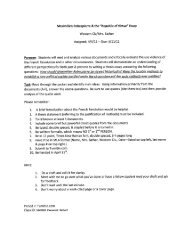

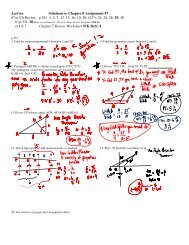
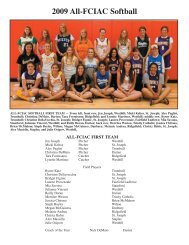
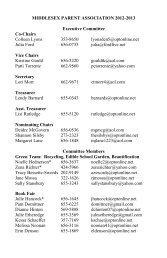
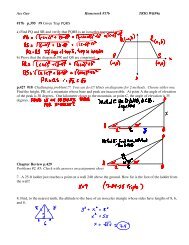
![Name Independent Practice Worksheet 23.]](https://img.yumpu.com/13527672/1/190x245/name-independent-practice-worksheet-23.jpg?quality=85)
